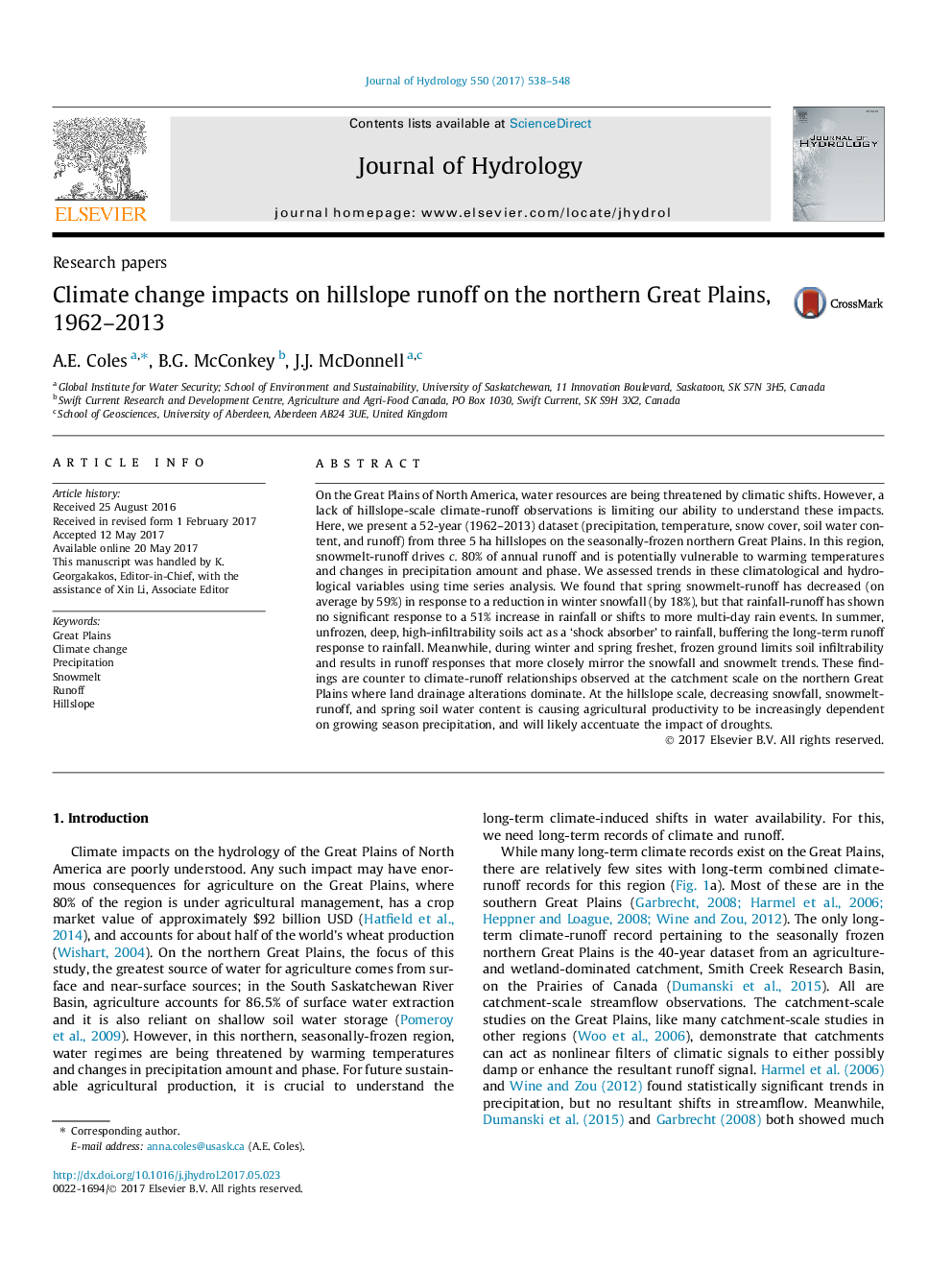| Article ID | Journal | Published Year | Pages | File Type |
|---|---|---|---|---|
| 5770775 | Journal of Hydrology | 2017 | 11 Pages |
Abstract
On the Great Plains of North America, water resources are being threatened by climatic shifts. However, a lack of hillslope-scale climate-runoff observations is limiting our ability to understand these impacts. Here, we present a 52-year (1962-2013) dataset (precipitation, temperature, snow cover, soil water content, and runoff) from three 5Â ha hillslopes on the seasonally-frozen northern Great Plains. In this region, snowmelt-runoff drives c. 80% of annual runoff and is potentially vulnerable to warming temperatures and changes in precipitation amount and phase. We assessed trends in these climatological and hydrological variables using time series analysis. We found that spring snowmelt-runoff has decreased (on average by 59%) in response to a reduction in winter snowfall (by 18%), but that rainfall-runoff has shown no significant response to a 51% increase in rainfall or shifts to more multi-day rain events. In summer, unfrozen, deep, high-infiltrability soils act as a 'shock absorber' to rainfall, buffering the long-term runoff response to rainfall. Meanwhile, during winter and spring freshet, frozen ground limits soil infiltrability and results in runoff responses that more closely mirror the snowfall and snowmelt trends. These findings are counter to climate-runoff relationships observed at the catchment scale on the northern Great Plains where land drainage alterations dominate. At the hillslope scale, decreasing snowfall, snowmelt-runoff, and spring soil water content is causing agricultural productivity to be increasingly dependent on growing season precipitation, and will likely accentuate the impact of droughts.
Related Topics
Physical Sciences and Engineering
Earth and Planetary Sciences
Earth-Surface Processes
Authors
A.E. Coles, B.G. McConkey, J.J. McDonnell,
